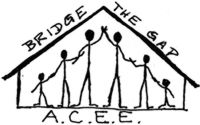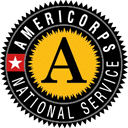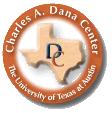HANDBOOK CONTENTS:
Working with Volunteers / Mentors
Coordinating After School Clubs & Activities
ACEE Home Page
Corporation for National Service: AmeriCorps

English as a Second Language (ESL) This is by far the most complicated and time consuming program, but it is worth every second of it! Plan on having two ESL I classes (students speak little or no English), two ESL II classes (students speak English in broken sentences, can write and understand basic English) , and one ESL III class (students know English but need help with reading comprehension, and conversation). Make sure you ask the teachers for permission to use their rooms. ESL rooms are usually in the back toward the 5th and 6th grade area. See the section on Volunteer Recruitment for information on how to recruit volunteer teachers. Also, if you look under the folder "ESL" in the VISTA materials, you will find various posters for past ESL orientations. A sample recruitment message and detailed task description for volunteer ESL teachers is provided on the Web. Your goal is to recruit at least five teachers. When contacting potential candidates, make sure they know the commitment- Tuesdays and Thursdays 6 - 8 p.m. Also, go over the task description with them, to make sure they understand what they would be getting into. Ask if they feel comfortable teaching mainly in Spanish, some Spanish and English, or all English. It is a good idea to have two orientation dates, to give candidates a choice in which to attend. In the past, Literacy Austin provided training/orientation and some work books, but they offer training only at certain times of the month and is sometimes difficult to structure around. As an alternative, Jennifer San Pedro (VISTA 1999-2000) suggests setting up a date for all new teachers to meet and watch the training videos. These are the same lessons and videos that Literacy Austin uses for training. ESL videos, workbooks, binders and dictionaries are at the back of the AmeriCorps room on the last bookcase on the second shelf. There is also a blue binder with information, but Jennifer did not find it helpful. Once your candidates have gone through the orienation and watched the video, call Casa Marianella at 385-5571 or Manos de Cristo at 477-7454 and ask if and when you and your candidates can observe an ESL class. Both places are nice and offer a variety of times to observe. Once everyone has observed at least two lessons, they are ready for their own class. TIPS FOR THE CLASS At the first class, have each teacher and even some other volunteers to help you. Have each attendee sign in as soon as they arrive and hand them an application for them to fill it out (their name, number and address are the most important). Welcome everyone and, to get started, introduce yourself as the coordinator, introduce the teachers and what level they will be teaching, and tell when classes will start. Make sure to tell the group that these classes are free of charge and day care is provided. Ask if they have any questions. If not, begin with the intake process (administering the test). For this part, explain carefully what you will be doing: asking each person a few questions in English to determine what level they should be in. Tell them that, for this part, teachers cannot speak Spanish until after they finish with intake. Remind them this is only to see what level they should be in. For the intake test, you need a test booklet (the booklet and the answer sheets are blue and should be in a small cardboard box). Hand them the answer sheet and tell them to fill out the information in the box. Once they have done this, take the answer sheet and ask them each question marking the letter they answer. If after five questions they do not understand you or the directions, tell them thank you they did well and proceed to the next person. For the teachers administering the test, have them look for pronunciation, grammar and comprehension; these will determine their ESL level. You must do one intake at a time, so make sure you go by the list and have someone calling out who is next. In that same box you should also find a test answer guide. It shows you how to grade the test. After assessment and placing students in appropriate classes, have the first day of class begin in the cafeteria. Call out the name of the teacher and his/her students and room number. Start with ESL III, then II, then I. Make sure you have a poster with the teacher's name and level on the door. It will also be a good idea to make a list of the students' names, their teacher and room number, and post it in the front of the cafeteria and 6th grade area, just in case they come in late. The use of bright arrows and signs to direct late students where ESL classes are and the Child Care Room are extremely helpful. Before each class, go to the Food Bank and do 'shop for' picking up drinks, produce, bread, and sweets. This takes at least one hour to do so plan ahead. Place them in the lobby area of the 5th grade wing. Make sure you have napkins, cups, plates, and trash bags. Tell the students and teachers they are free to take whatever they want at the end of class. Give each teacher an assignment to help you carry some of this trash to the dumpster, one to check the doors, and one to help take anything back up to the AmeriCorps room. The box of toys in the PALs room must be picked up along with any other messes. The box can be stored on top of the cabinet. Make sure you let your students and teachers know when they do not have class. Send home reminders of when there will be no class and when to return. If a teacher can not make teach, it is their responsibility to call ahead and make arrangements for a substitute or have someone else take the class. This is very important. If the students feel you do not care about class, they will leave too. Make sure no rocks, sticks, chairs, tape, or any other contraption are used to keep doors open before, during and after ESL. This is very important to help keep the integrity of this program. If people come late, tell them to come through the back door and knock. Someone will always hear them and open the door. Make sure ESL teachers and other volunteers pick up after themselves and put back all furniture where it belongs. Warning Regarding PALs room: Talk to the PALS folks ahead of time and let them know when ESL will be starting. The PALs teachers are very territorial so make sure none of the kids touch or go into any of the areas! Make sure the child care workers know not to let the kids play in the areas. There is a box labeled 'ESL toys' on top of the cabinet in the PALs room these are the only things the children are allowed to play with. If you need more things, ask the Assistant Principal or Bryan. See example of folder labeled "Shawn Rooker". Before major holidays, like Christmas, Spring Break, Thanksgiving, etc., it is a nice idea to have an ESL party. Have each person sign up to bring a dish, plates, drinks, etc. and order food from the food bank, just in case, and have everyone report to the cafeteria to eat, mingle, enjoy music and learn more about the holiday and why it is celebrated here or what makes it different. Everyone enjoys it and it is a nice break.
|

